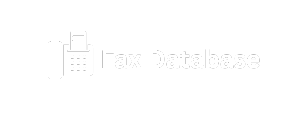- Understanding OKR vs KPI: Key Differences and Benefits of Using Both
Understanding the differences between OKRs (Objectives and Key Results) and KPIs (Key Performance Indicators) helps clarify their unique roles and benefits.
KPIs are metrics afghanistan phone number library that show how effectively a company is achieving key business objectives. They track performance over time and are essential for managing day-to-day work.
OKRs are goal-setting tools aiming for significant? concrete outcomes within a specific timeframe? providing direction for employees to align their efforts with broader organizational goals.
KPIs focus on ongoing processes? such as customer satisfaction scores or monthly sales growth.
OKRs are often more ambitious and can stretch an organization by setting challenging targets.
Integrating OKRs and KPIs helps maintain a balance between striving for ambitious goals (OKRs) and managing the health of ongoing operations (KPIs). For example? while a KPI might track the percentage of compostable packaging matter for business growth materials used? an OKR might aim to transition to 100% compostable packaging within a year.
To know more about OKR vs KPI? read our article “OKR vs KPI – What’s the Difference (and Why it Should be OKR AND KPI instead)?”
By integrating OKRs and KPIs? organizations can maintain a balance between striving for ambitious goals and managing the health of ongoing operations.
- Real-world OKR Examples from Leading Companies
Learning from real-world OKR examples helps you understand how OKRs work in successful organizations. These examples show how OKRs can be versatile and effective across different industries.
For instance?
Google adopted the OKR framework early on? influenced by venture capitalist John Doerr. Google’s OKRs balance maintaining a strong search engine (a KPI) with innovative projects like self-driving cars (an OKR). This clarity and focus have been key to Google’s success in various tech fields.
Another example is LinkedIn? which uses OKRs to set company goals and align them with team efforts. Each team’s OKRs contribute to LinkedIn’s overall success? creating a unified strategy.
LinkedIn might an OKR to increase user engagement by adding new networking features while tracking the user engagement rate as a KPI.
Similarly? Asana? a project management company? uses OKRs to improve software features and customer satisfaction? with KPIs monitoring user activity and support times.
These examples show that OKRs china leads can help any organization enhance productivity? foster creativity? or achieve environmental goals while keeping teams aligned with the company’s vision.
- Comparing OKR Tools: Features? and Benefits
Choosing the right tool is crucial for managing OKRs effectively. Various platforms are designed to help companies plan? track? and achieve their goals.
Atlassian’s Confluence offers an OKR-focused platform that integrates with its project management software? Jira. It supports collaborative goal-setting? and progress updates? and aligns daily work with strategic objectives.
Confluence’s OKR tool is user-friendly and adaptable?
Suitable for businesses of different sizes and industries.Asana simplifies project management with a focus on teams and workflow. Its OKR feature allows users to set goals? assign tasks? and monitor progress visually.
Asana is flexible in managing goals and initiatives? making it effective for project-driven teams.
180ops is a revenue intelligence tool that uses AI and machine learning to help businesses set and track OKRs. It combines internal? customer? and market data to provide actionable insights supporting OKR processes.
180ops offers a customized data recipe? advanced analytics? and a focus on aligning strategic objectives with operational realities. It also provides tools for risk management? sales projection? and market trend analysis? which can help in setting and achieving OKRs effectively.
When evaluating OKR tools? consider:
User Interface: Is it easy to use?
Integration: Does it work well with other tools your organization uses?
Customizability: Can it be tailored to your team’s needs?
Support and Resources: Are there good customer service and learning materials?
